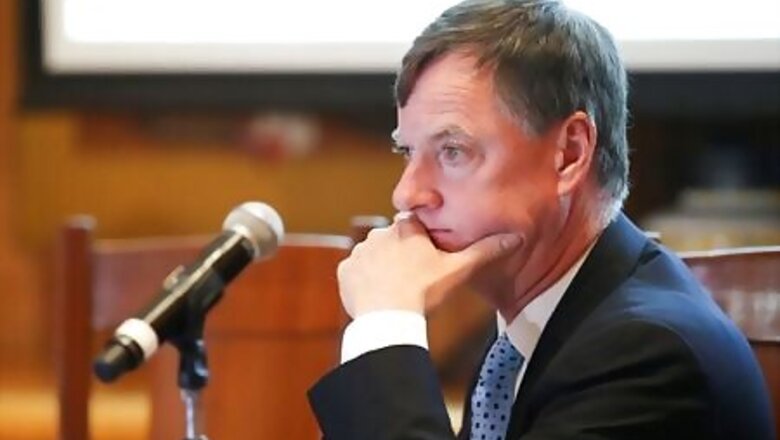
views
In the week since the Federal Reserve made a landmark shift in its approach to monetary policy, details are emerging on what it could look like in practice, with two Fed policymakers on Thursday saying they’d be comfortable with leaving interest rates near zero even if inflation rises to levels not seen on a sustained basis in some 30 years.
Remarks from a number of Fed policymakers in recent days suggest that a shift to a more accommodative stance in pursuit of higher inflation isn’t imminent and that most feel the next move to support the economy needs to come from Congress.
“Partisan politics threatens to endanger additional fiscal relief,” the president of the Chicago Fed, Charles Evans, told the Lakeshore Chamber of Commerce in Hammond, Indiana, in one of the sharpest rebukes yet from a Fed policymaker to lawmakers who have been at loggerheads for months over the size of a new relief package. “A lack of action or an inadequate one presents a very significant downside risk to the economy today,” Evans said.
But once the coronavirus is under better control and unemployment has come down somewhat, he said, the Fed may need to shift its accommodative policies into higher gear.
That push, he said Thursday, could take the form of promising to keep interest rates pinned near zero until inflation reaches 2.5%, well above current low levels and modestly above the U.S. central bank’s inflation target of 2%.
“I’d be comfortable with inflation going up to 2.5% as long as we were trying to average off very low inflation rates,” Evans told reporters on a call.
The U.S. central bank announced last week that it was revising its approach for setting monetary policy to focus more on addressing shortfalls in employment and less on inflation.
Evans was the architect of an approach the Fed adopted in 2012 in which it vowed not to raise rates until unemployment fell below 6.5% as long as inflation was projected to rise to no more than 2.5%.
“I think the way that we did it in 2012 is not unattractive, (but) our environment is somewhat different now because we are saying we want to average 2%,” Evans said.
In a similar vein, Atlanta Fed President Raphael Bostic said he would not be concerned with inflation going to about 2.4%.
“As long as we see the trajectory moving in ways that suggest that we are not spiraling too far away from our target, I’m comfortable just letting the economy run and letting it play out,” Bostic said in an interview with the Wall Street Journal on Thursday.
While the Fed’s preferred gauge of inflation, the core PCE index, measured above 2.4% a few times in 2006 and 2007, the last time it did so for a sustained period was in the early 1990s.
Fed policymakers are in complete agreement that the Fed should not raise rates preemptively as unemployment falls “unless you see inflation,” Bostic said.
Disclaimer: This post has been auto-published from an agency feed without any modifications to the text and has not been reviewed by an editor















Comments
0 comment